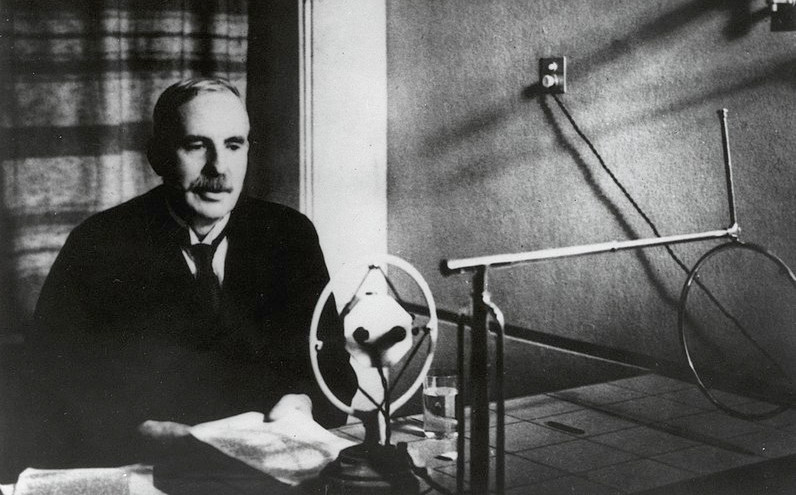
To multiply this 58-digit number by 6, just move its last digit to its head.
Surprisingly, no smaller number displays this behavior when multiplied by 6. It’s called a parasitic number.

To multiply this 58-digit number by 6, just move its last digit to its head.
Surprisingly, no smaller number displays this behavior when multiplied by 6. It’s called a parasitic number.
In a 2009 experiment, Keele University researchers Richard Stephens, John Atkins, and Andrew Kingston asked two groups of subjects to hold their hands in ice water. One group was asked to swear while they did so, and the other was asked to say neutral words. The swearers were able to hold their hands in the water twice as long, and these subjects reported feeling less pain.
No one’s quite sure why this works — perhaps swearing activates the amygdala, which leads to a release of adrenaline, producing natural pain relief. Stephens said, “I would advise people, if they hurt themselves, to swear.”
Interestingly, Stephens later found that people who reported swearing every day reported a lesser pain-deadening effect than those who swore less often. Perhaps people who seldom swear place a higher emotional value on these words, which triggers a stronger chemical response.
“Swearing is a very emotive form of language and our findings suggest that over-use of swear words can water down their emotional effect,” Stephens said. “Used in moderation, swearing can be an effective and readily available short-term pain reliever if, for example, you are in a situation where there is no access to medical care or painkillers. However, if you’re used to swearing all the time, our research suggests you won’t get the same effect.”
The writing in Hugo Gernsback’s 1911 science fiction novel Ralph 124C 41+ is uniformly terrible:
As the vibrations died down in the laboratory the big man arose from the glass chair and viewed the complicated apparatus on the table. It was complete to the last detail. He glanced at the calendar. It was September 1st in the year 2660. Tomorrow was to be a big and busy day for him, for it was to witness the final phase of the three-year experiment. He yawned and stretched himself to his full height, revealing a physique much larger than that of the average man of his times and approaching that of the huge Martians.
But it successfully predicted spaceflight, tape recorders, sound movies, solar energy, artificial cloth, television, synthetic foods, remote-control power transmission, the videophone, transcontinental air service, and voiceprinting. While Martin Gardner called it “surely the worst SF novel ever written,” Arthur C. Clarke marveled that it contains the first accurate description of radar, encountered when Ralph is pursuing the villain who has kidnapped his girlfriend:
A pulsating polarized ether wave, if directed on a metal object can be reflected in the same manner as a light-ray is reflected from a bright surface or from a mirror. … By manipulating the entire apparatus like a searchlight, waves would be sent over a large area. Sooner or later the waves would strike a space flyer. A small part of the waves would strike the metal body of the flyer, and these waves would be reflected back to the sending apparatus. Here they would fall on the Actinoscope, which records only reflected waves, not direct ones. … From the intensity and the elapsed time of the reflected impulses, the distance between the earth and the flyer can then be accurately and quickly calculated.
Clarke calls Ralph 124C 41+ “dreadful but fascinating. … The pun in the title gives you a good idea of its literary quality.” The full text is here.

Clusters of soap bubbles obey some pleasingly simple rules: They arrange themselves into constant-mean-curvature surfaces (such as pieces of spheres) that meet in threes at 120° along seams, which in turn meet in fours at about 109° angles at points.
“Nothing more complicated ever happens,” writes mathematician Frank Morgan, even in complicated clusters with thousands of bubbles.
Belgian physicist Joseph Plateau observed and recorded this fact in the 19th century, but he offered no proof. More than 100 years would go by before Rutgers University mathematician Jean Taylor produced a complete explanation. Her demonstration required no physics or chemistry, just the principle of area minimization.
Morgan writes, “Many pages of complicated mathematics later came the conclusion: Plateau’s laws, 120° angles, 109° angles, and all.”
(Frank Morgan, “Mathematicians, Including Undergraduates, Look at Soap Bubbles,” American Mathematical Monthly 101:4 [April 1994], 343-351.)

During World War I, Ernest Rutherford worked tirelessly on a secret project to detect submarines by sonar. But on one occasion he did decline to attend a committee meeting.
“I have been engaged in experiments which suggest that the atom can be artificially disintegrated,” he wrote. “If it is true it is of far greater importance than a war.”
In 1959 chemist William J. Buehler of the Naval Ordnance Laboratory was trying to devise a missile nose cone that could withstand extraordinary heat and fatigue. He found a promising alloy of nickel and titanium and passed around a sample at a 1961 laboratory management meeting. The sample had been folded like an accordion, but in examining it Buehler’s colleagues flexed and twisted it out of shape. When of them idly held it over his pipe lighter, they got a surprise: The sample sorted itself back into its accordion shape.
Buehler’s alloy is now known as nitinol (for “nickel titanium Naval Ordnance Laboratory”), and this property is known as “shape memory.” In Nature’s Building Blocks, John Emsley notes, “Spectacle frames made from nitinol can be bent and twisted into remarkable shapes and, when released, will jump back to their original shape.”
Here’s an odd little animal: Get two rigid disks, cut a notch in each one, fit them together as shown, and try to send them rolling across a table. If the notches are too deep, marrying the discs too closely together, then the object will pretty quickly slow to a stop with each disc standing at a 45° angle to the table. If the notches are too shallow, it will stop with one disc standing up at right angles to the table. But if the notches are about the right length, ideally 29.2893 percent of the radius, then the contraption will roll along quite happily for a surprisingly long distance.
The reason is that in that configuration the object’s center of mass remains level as it rolls along. (It does move from side to side, which is why it’s called the wobbler.)
Apparently this was originally discovered by A.T. Stewart, who dubbed his creation the “two-circle roller” in a 1966 note in the American Journal of Physics. I found it described in Matt Parker’s 2014 book Things to Make and Do in the Fourth Dimension, which includes a simple proof of the principle involved. There’s a more rigorous discussion here.

How many animals of each kind did Moses take on the ark? If you’re like most people, you tend to answer two, even though you know it was Noah, not Moses, who took animals on the ark. People tend to have difficulty noticing when a term in a sentence or question is replaced with a semantically similar but incorrect term.
This isn’t really surprising on its face. What’s surprising is how robust the effect is. About 50 percent of people make the mistake even when asked to read the question aloud before answering it. The effect persists even when people are warned that a distortion might be present, and most people express confidence in their answer even when given unlimited time to think about it. Further examples:
One possible explanation is “partial matching” — the distorted question so closely resembles one that we recognize that we take the risk of jumping to the answer. “Everyday cognitive processing must be based on simple heuristics such as matching sets of features rather than exact matches, as very few tasks require exact matches,” suggest researchers Heekyeong Park and Lynne M. Reder. “Partial matching is immutable because it is the most efficient way for memory to operate, given the nature of the environment in which we live.”
(Heekyeong Park and Lynne M. Reder, “Moses Illusion,” in Rüdiger F. Pohl, ed., Cognitive Illusions, 2004.)
Engaged to give a talk at a university, logician Raymond Smullyan arrived half an hour early and wrote the following sentence on the blackboard, “to give the audience something to mull over”:
You have no reason to believe this sentence.
This, he reasoned, was a paradox. If you have no reason to believe the sentence, then what it states is really the case, which is certainly a good reason to believe it. But if you have a good reason to believe it, then it must be true … which means that you have no reason to believe it.
Half an hour later he came down the stairs to a packed audience. Spotting a bright-looking boy in the front row, he pointed to the sentence and asked him, “Do you believe that sentence?”
“Yes,” said the boy.
“What is your reason?”
“I don’t have any.”
Smullyan asked, “Then why do you believe it?”
The boy said, “Intuition.”
(Raymond Smullyan, “Self-Reference in All Its Glory!” conference “Self-Reference,” Copenhagen, Oct. 31-Nov. 2, 2002.)

The samurai crab, Heikea japonica, earns its nickname well: Its shell bears a startling resemblance to the face of an angry warrior. Some Japanese believe that these crabs are reincarnated samurai who, defeated at the Battle of Dan-no-ura, threw themselves into the sea, as described in the epic Tale of the Heike.
Biologist Julian Huxley put forward the idea that the “faces” were an example of artificial selection. He suggested that fishermen who caught crabs with particularly face-shaped carapaces, believing them to be reincarnated spirits, threw them back into the sea, permitting them to reproduce while their brothers were eaten.
But humans don’t eat these crabs, and in any case the “warrior” crabs exist even far from sites of human fishing. Really the crabs are an example of another, equally compelling phenomenon — pareidolia, our tendency to see significant patterns where none exist.